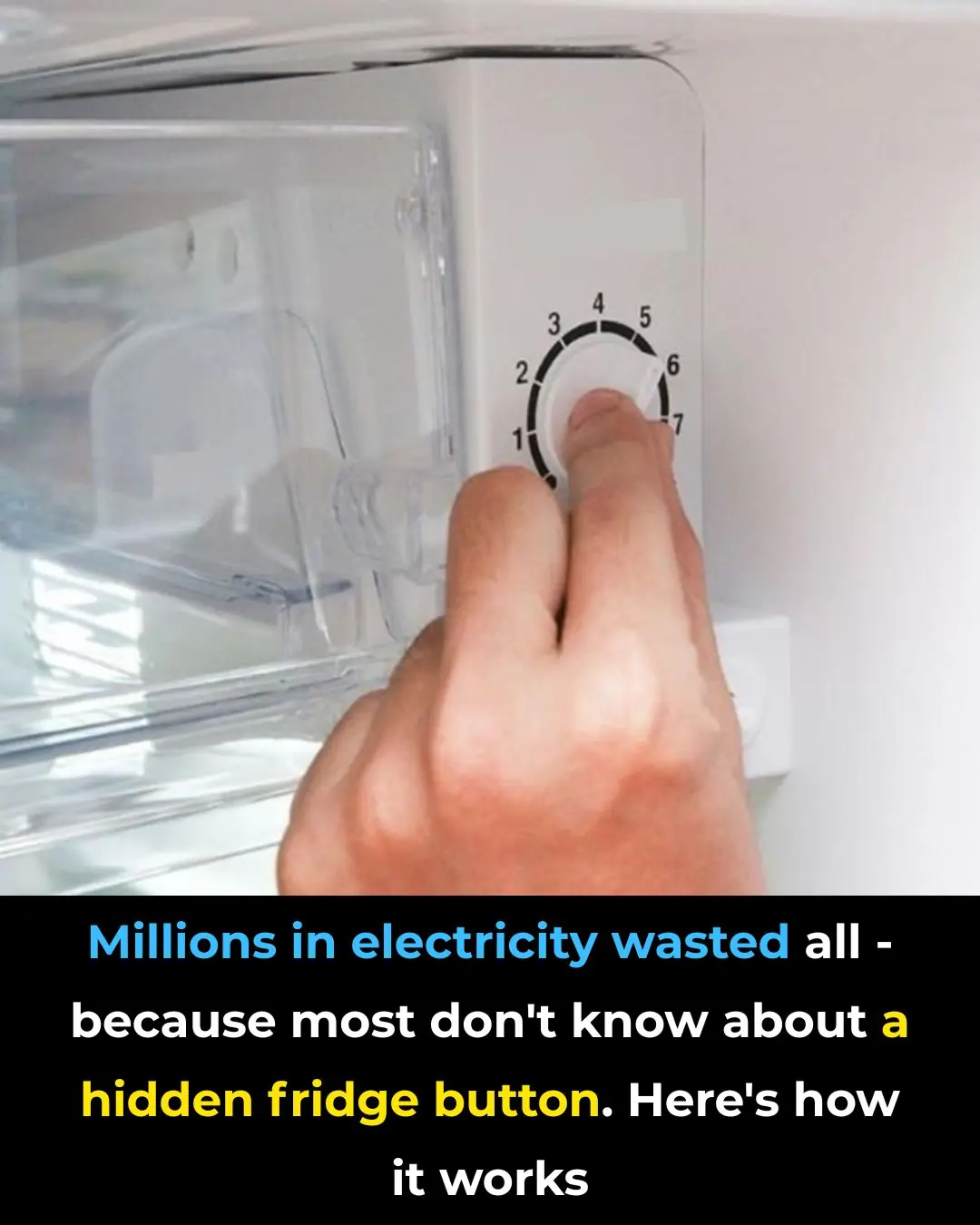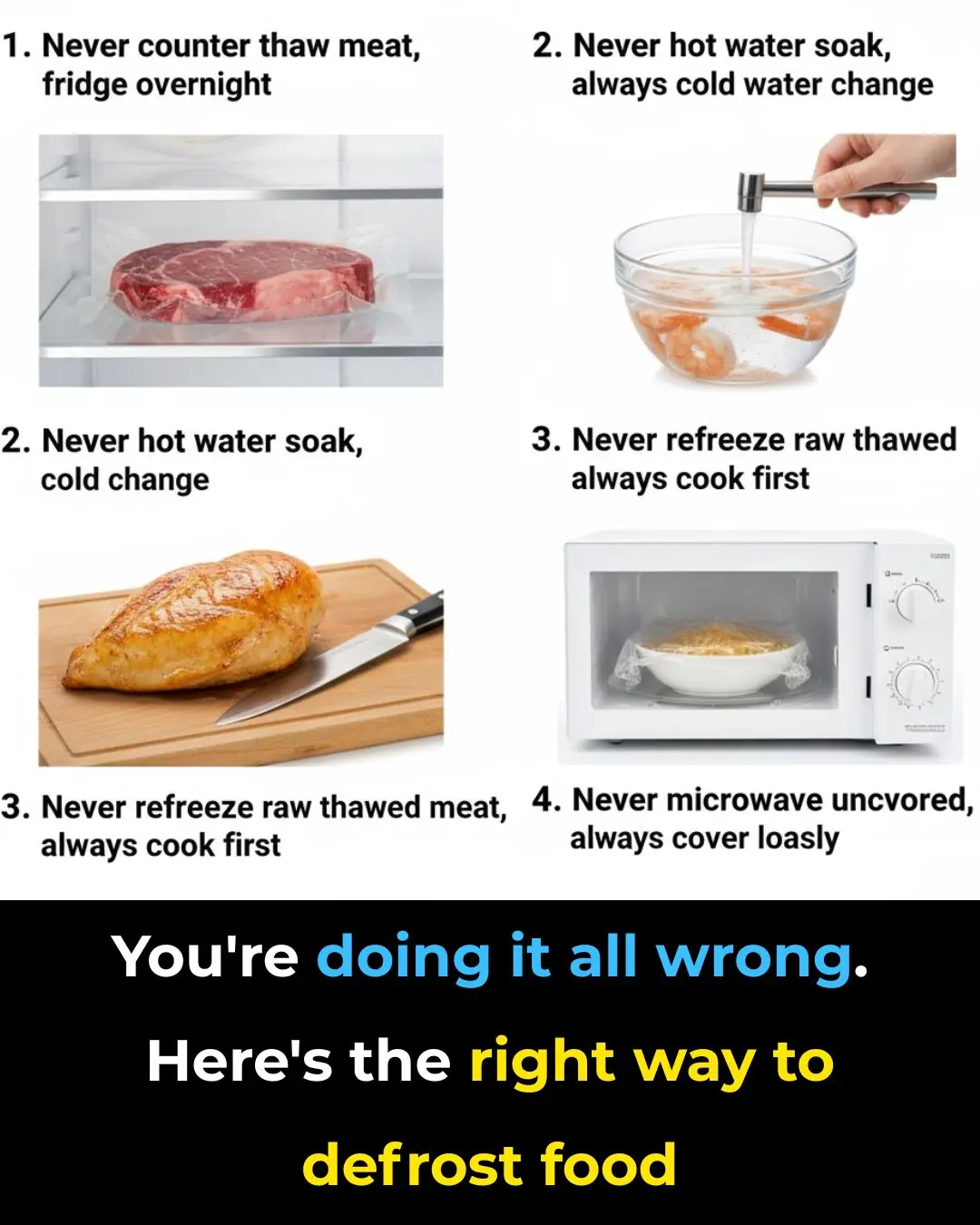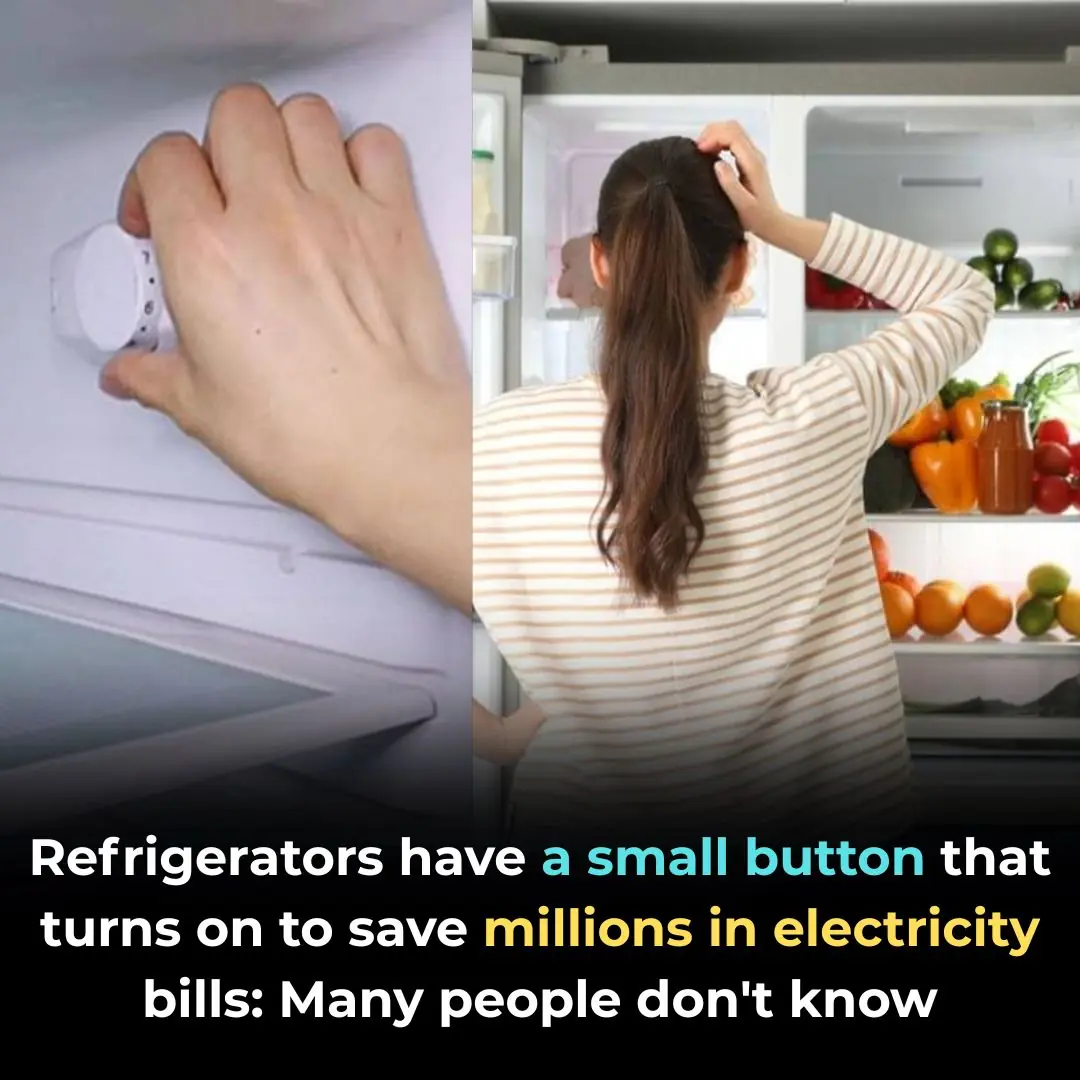
I had no clue about this!
❄️ I Had No Clue About This! The Hidden Fridge Button That Could Save You Hundreds
Many homeowners are unaware of a small but powerful feature inside their refrigerators: the temperature control button. Often overlooked or misunderstood, this simple setting can dramatically affect your energy usage, food safety, and appliance lifespan.
🔧 What Is the Temperature Control Button?
This button or dial regulates the internal temperature of your fridge and freezer. Most people leave it at the factory default, assuming it’s ideal. But depending on the season, how full your fridge is, and how often you open the door, those settings might be far from efficient.
🌡️ Ideal Temperature Settings
-
Refrigerator: 37°F to 40°F (3°C to 4°C)
-
Freezer: 0°F (-18°C)
These temperatures slow bacterial growth and keep frozen foods safe. Anything warmer risks spoilage; anything colder can freeze delicate items or cause freezer burn.
🕰️ Seasonal Adjustments You Should Be Making
-
Spring & Fall: Mild ambient temperatures mean your fridge doesn’t work as hard. Use an appliance thermometer to check accuracy and adjust slightly to save energy.
-
Summer: Kitchens heat up, and fridges get opened more often. Set the fridge closer to 37°F, avoid overloading, and keep items covered and placed near the back.
-
Winter: If your fridge is in a cold garage or basement, external temps can confuse the thermostat. If items start freezing, bump the temperature up slightly.
⚡ Why It Matters
Incorrect settings force your fridge to overwork, increasing electricity usage. Experts estimate that optimizing your fridge and freezer temperatures can reduce energy consumption by up to 10%—saving households $100 or more annually. Multiply that across millions of homes, and the impact is staggering.
🧊 Extra Tips for Efficiency
-
Use a separate fridge/freezer thermometer for accuracy.
-
Don’t rely on vague dial settings like “cold” or “coldest.”
-
Wait 24 hours after adjusting before rechecking.
-
Keep coils clean and vents unblocked to maintain airflow.
-
Avoid placing hot food directly into the fridge—it makes the compressor work harder.
-
Keep the fridge about ¾ full to maintain stable temperatures without overloading airflow.
💡 The Takeaway
This tiny button, often ignored, holds the power to reduce your energy bills and extend the life of your appliance. It’s a simple change with a big payoff—proof that sometimes, the smallest tweaks make the biggest difference.
News in the same category


I had no clue about this!

I had no idea

I had no idea

I had no clue about this!

You’re doing it all wrong. Here’s the right way to defrost food

Never Clean Your Light Switch with Water: Here’s a Trick to Make It Spotless

Bad Habits After Doing Laundry That Can Make Your Whole Family Sick! Many People Overlook This Detail

Don’t Throw Away Your Used Balm Jar – Here’s a Super Useful Way to Reuse It That Every Family Needs

A Small Button on Your Refrigerator Can Save You Millions on Electricity: Many People Don’t Know This

Why Do Flat Electrical Plugs Have Two Round Holes? The Hidden Purpose Is Brilliant

The Little Aluminum Ring on a Sausage Stick Has a Hidden Use — Few People Know Its Clever Purpose

Don’t Eat Tofu Right After Buying It — Freeze It First for a Magical Effect: You’ll Wish You Knew This Sooner

Pour This Liquid Into the Drain – The Unpleasant Odor in Your Bathroom Will Quickly Disappear

Get Rid of Termites in Wooden Doors Easily – Keep Your Wood Beautiful for 10 Years

What you see reveals your personality

You’re doing it all wrong. Here’s the right way to store knives

You’re doing it all wrong. Here’s the right way to unclog your drain

10 cooking cleanup habits you’re doing wrong
News Post

Eating fish in a way many people believe to be highly nourishing, the young woman ended up with premature ovarian failure and a body full of mercury

Papaya Seeds: A Powerful Remedy for Liver Health and How to Use Them as a Pepper Substitute

Inside $4,000,000,000 'mega ghost city' that's 6 times the size of New York with a fraction of the population

I had no clue about this

I had no clue about this!

I had no idea

He drank hot tea every day. The results of his health check left him stunned

I had no idea

IF YOUR BODY SHOWS THESE EARLY WARNING SIGNS YOU NEED TO GET YOUR KIDNEY CHECKED FAST

People left 'speechless' after noticing new addition to the White House website

Neuroscientist reveals chilling things he saw while in a coma as he explains what it really feels like

I had no clue about this!

You’re doing it all wrong. Here’s the right way to defrost food

Vertical Nail Ridges? Here’s What Causes Them — and How to Fix It

The Unseen Heroes: A Rescue Dog's Loyalty That Saved My Life

Barrett’s Miracle: A Journey of Faith, Strength, and Prayer

A Farewell to a Friend and His Passion for Music

Top 5 Nutrients to Reduce Swelling in Feet and Legs
